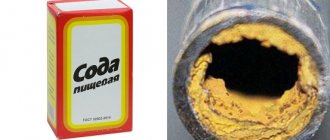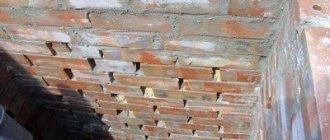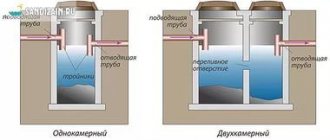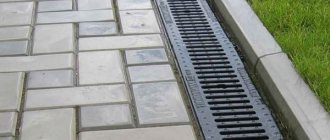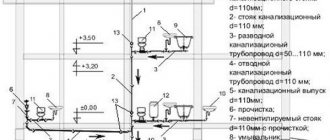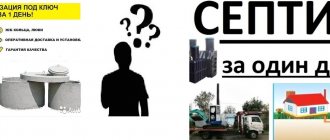If earlier the organization of sewerage on a personal plot was limited to the construction of a cesspool, today more and more people are installing septic tanks on the plot. Using a local sewer system equipped with a septic tank is convenient and pleasant, however, you need to follow some rules. Let’s figure out whether it’s possible to throw toilet paper down the toilet and whether this will cause the septic tank to fail.
In the past, almost every bathroom had a special container for collecting used toilet paper and other hygiene items. Of course, such a bucket, even the most elegant one, does not decorate the interior, but, nevertheless, many people continue to use this method of waste disposal because they are afraid of clogging the sewer. Especially if it is a local system that uses a septic tank to process waste.
Types of treatment facilities
Cleaning of organic waste occurs under the influence of special bacteria that artificially colonize inside the device.
In structurally simple and economical structures without an aeration function, waste decomposition is carried out by anaerobic bacteria in an oxygen-free environment.
Such devices require installation of ventilation to ensure gas removal and normal evaporation of liquid.
In septic tanks with aeration with two or more chambers, there are two types of microorganisms - anaerobic and aerobic. The former process the bulk of waste in an oxygen-free chamber. Then the second stage of waste treatment (clarification) by aerobic microorganisms is carried out, after which the contents of the waste do not pose a danger to human health and the environment.
What problems may arise
Mostly, malfunctions occur due to improper use and errors during installation of the sewerage system. Main problems:
- Clogged pipelines and strainers.
Occur as a result of washing away large debris that does not dissolve in water (mechanical blockages). Other reasons are an insufficiently wide diameter of the pipe (less than 150 mm), the appearance of hard deposits (fat plugs) on its walls, and an excessively large angle of inclination that interferes with the normal flow of water. - Difficulties during pumping. They occur when large, water-insoluble waste is washed away. The contents thicken, acquire a heterogeneous consistency, and become difficult to remove. Call us and we will promptly remove the blockage and pump out the septic tank using special equipment.
When disinfectants, drugs and other substances that are lethal to bacteria enter the treatment chambers, the death of most of the population often occurs. In this case, the quality of cleaning decreases noticeably, an unpleasant odor appears in the bathroom and area, and contamination of the soil and groundwater occurs with organic waste.
If the bacteria are dead, you can buy them at a specialty store and re-add them to the septic tank. To prevent this from happening, do not use chlorine-containing household chemicals and disinfectants.
What is toilet paper made of?
The basis of this hygiene item is cellulose. It is one of the most commonly found organic compounds on Earth. Cellulose has fairly strong fibers and has one quality that interests us most - it is insoluble in water!
Therefore, all the manufacturers’ assurances that the paper will dissolve without leaving a residue are, to put it mildly, exaggerated. Due to the fact that toilet paper is thin, when it gets into water, it breaks down into fibers, which go on a “journey” through the communications of the sewer system.
What not to throw into a septic tank
Septic tanks need to be cleaned regularly. Economical single-chamber designs require special attention.
To avoid blockages, death of bacteria and problems when pumping out the contents of a septic tank using sewer equipment, follow the operating rules - do not throw into the autonomous sewer system:
- sand, cement;
- small construction waste;
- products made of plastics, silicone, rubber;
- aqueous solutions containing potassium permanganate, technical alkalis and acids;
- expired medications;
- fuels and lubricants;
- antifreeze;
- pet hair and hair;
- wet wipes;
- wet toilet paper;
- feminine hygiene products.
The diameter of organic waste particles allowed for disposal in a septic tank should not exceed 1 cm.
It is not recommended to pour out large quantities of food residues that dissolve and soften in water.
Things that cannot be thrown into a septic tank in any form include fats, bones, vegetable and mushroom peelings. The above leads to serious blockages. Jelly-like mushroom cleaners deserve special mention because they clog up the filters and are quite difficult to clean out.
It is also undesirable to wash off peas, seeds, nuts and small uncrushed berries, since they float to the surface of the water and do not decompose for a long time.
It is strictly forbidden to discharge wastewater from a bathtub, shower stall, washing machine, kitchen sink and swimming pool into a septic tank due to the large amount of water being released. Autonomous sewage systems simply cannot cope with such a volume of liquid, which will lead to permanent contamination of the soil and groundwater.
Is it possible to throw toilet paper into a septic tank?
Toilet paper is the culprit for a large portion of clogs. Often it causes indirect harm, since it does not even have time to reach the cleaning chamber due to installation errors:
- pipe diameter is not wide enough;
- excessive drain length;
- incorrect slope;
- a large number of turns.
Cellulose dissolved in water clumps into clumps and gradually accumulates fats and small solid waste. The deposits become more and more dense, deposit on the walls, clog corners and interfere with the normal movement of fluid.
If the pipe is installed taking into account all the rules - a diameter of at least 150 mm, a slope of at least 2 cm per 1 m, no or minimal number of turns - the question of choosing special toilet paper for septic tanks disappears (you can flush any one without consequences).
Regardless of the quality of the sewer drain, when using single-chamber structures and cesspools for toilet paper, it is worth selecting a separate bucket. Cellulose settles at the bottom of such a structure in the form of a hard-to-remove dense crust and in large quantities can clog the hose of a sewer machine.
If you use devices with aeration, then you can throw any toilet paper into them. In the process of deep cleaning of organic waste in at least two chambers by two types of microorganisms, toilet paper is completely decomposed and converted into sludge.
Septic tank, toilet paper and other hygiene products
If earlier the organization of sewerage on a personal plot was limited to the construction of a cesspool, today more and more people are installing septic tanks on the plot. Using a local sewer system equipped with a septic tank is convenient and pleasant, however, you need to follow some rules.
Let’s figure out whether it’s possible to throw toilet paper down the toilet and whether this will cause the septic tank to fail. In the past, almost every bathroom had a special container for collecting used toilet paper and other hygiene items. Of course, such a bucket, even the most elegant one, does not decorate the interior, but, nevertheless, many people continue to use this method of waste disposal because they are afraid of clogging the sewer. Especially if it is a local system that uses a septic tank to process waste.
How does the system work?
To answer the question of whether it is possible to throw toilet paper into the toilet, you need to understand how a septic tank works. If the house is equipped with an exhaust sewer system, that is, instead of a septic tank, a filter or sealed cesspool is used, then discharging hygiene items into the sewer system is prohibited. Wastewater is simply stored in storage tanks, and when pumped out, paper and other debris can cause a blockage in the pump of the vacuum cleaner.
A septic tank functions differently; in it, waste is processed biologically. The septic tank has its own microflora that processes organic matter. However, microorganisms cannot cope with all organic waste. For example, polyethylene, cigarette filters and cellulose are not processed by bacteria.
What problems might arise?
If you throw any garbage into a septic tank without thinking about the consequences, you will soon encounter a number of problems, namely:
- Formation of blockages in the pipeline
- Clogged filters
- Death of microflora
- Difficulties in pumping out sludge
Pipeline blockages
In multi-storey buildings, most residents calmly throw used toilet paper into the toilet and no blockages occur in the sewer pipe. But in local systems the situation is different. Why is this happening?
The fact is that water flows almost constantly into the sewer pipe of a multi-storey building, because there are many people living in the house and the sewer is often used. As a rule, few people live in a private house, so water flows into the sewer pipe much less often. This can lead to the fact that paper or other debris will not have time to be flushed into the septic tank, but will begin to accumulate in the pipe, forming a blockage.
Advice! To reduce the likelihood of blockage, it is necessary to use a pipe with a diameter of 150 mm to create an external sewer pipeline. In addition, the pipe must be laid with an optimal slope so that the water moves by gravity and does not stagnate.
Clogged filters
Some types of septic tanks are equipped with mesh filters that trap large insoluble debris. If there is a lot of this debris, the filter will quickly clog and water simply will not pass through it.
Advice! If the filter is clogged, then solving this problem is quite simple; you need to remove this device and wash it. Of course, this is not the most pleasant job, so in order to have to do it less often, you should not throw large insoluble garbage into the toilet.
Death of microorganisms
Of course, disposing of toilet paper will not lead to the death of microflora, but toxic substances and disinfectants can lead to the fact that the quality of septic tanks will significantly decrease. Therefore, it is strictly forbidden to allow the following to get into the septic tank:
- Bleach and household chemicals containing chlorine
- Potassium permanganate solution
- Antibacterial agents
- Caustic substances and petrochemical products
When toxic substances enter the septic tank, the microflora dies, so the water ceases to be purified with the help of bacteria, that is, the efficiency of the installation will decrease.
Advice! If the microflora in the septic tank has died, then to restore the operation of the installation you will need to purchase a biological product, which is a bacterial culture.
Difficulties during pumping
As is the case with storage tanks, problems may arise when pumping sludge from a septic tank if it contains large, undissolved debris. What kind of paper can still be discarded?
Despite the difficulties described above, it is still possible to dump toilet paper into a septic tank. You just need to choose the right hygiene products. The choice is determined by the septic tank model.
Thus, modern installations such as “Topas” or “Unilos Astra” do an excellent job of processing any type of toilet paper. But ordinary models without forced aeration can clog if you throw plain paper into the toilet.
For such septic tanks, soluble toilet paper is suitable, which completely dissolves in water and does not create a threat of blockages. As a last resort, you can purchase simple but very thin paper. But it is not recommended to throw multilayer options into septic tanks without forced aeration.
The main disadvantage of dissolvable toilet paper is its price; it is significantly more expensive than conventional hygiene products. However, cleaning the sewer system and repairing the septic tank will cost much more, so saving on hygiene products in this case will come at a cost. But even water-soluble hygiene products can cause clogs if you wash off whole rolls of them.
Other hygiene products
So, we figured out that certain brands of toilet paper can be disposed of in a septic tank. If modern VOCs equipped with forced aeration are used, then the most ordinary brands can be used, as long as you do not throw them in too large pieces. But other hygiene products should not enter treatment plants. Do not throw into the installation:
- Multi-layer paper towels
- Cotton pads
- Women's pads and tampons
- Baby diapers
- Wet wipes, etc.
Advice! One of the most insidious hygiene products is wet wipes. The material from which they are made is completely insoluble in water. Therefore, even a couple of napkins thrown into the toilet is enough to cause a blockage.
So, if a house is equipped with a local sewer system, then residents should know what things can be thrown into the toilet and what things should not go into the septic tank. Failure to comply with operating rules will result in the treatment plant breaking down and requiring serious and expensive repairs.
What kind of toilet paper can be flushed into a single-chamber septic tank?
Anaerobic bacteria in single-stage treatment facilities do not cope well with the decomposition of cellulose.
If you have installed an economical model of an autonomous sewer system and do not want to litter the usable area of a small bathroom with a trash can, use biodegradable or water-soluble toilet paper specifically for septic tanks. Such paper instantly disintegrates into tiny fibers as soon as it is in water.
in St. Petersburg, has been specializing in the maintenance, cleaning and repair of sewer systems and structures of any complexity for many years. We know everything about cleanliness.
To call a team of specialists, rent equipment or get advice from a manager, call us by phone. We work 24 hours a day, seven days a week.
You may also be interested in our class=”aligncenter” width=”934″ height=”652″[/img] Maintenance of mobile toilet cabins Rental of toilet cabins
Septic tank pumping
| How to contact us: | |||
| +7 | Request a call back | ||
| [email protected] | Order a service online | ||
Why does toilet paper not dissolve?
Its main raw material is cellulose, which is made from wood chips by cooking. It is a fibrous material with the following qualities.
- Cellulose has high strength characteristics and can withstand quite severe mechanical loads.
- It is resistant to many chemically active substances.
- And does not dissolve in water.
Sewer blockage
That is, it turns out that once in the toilet, toilet paper begins to travel throughout the entire sewer system, gradually changing its shape from sheets to lumps and small pieces. And since in private homes saving water is one of the first places, this very water is sometimes not enough to push the paper all the way through. Here you have a blockage in the pipe.
